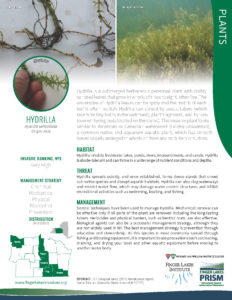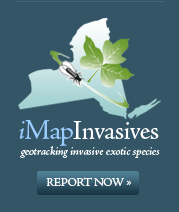Hydrilla
Common Name: Hydrilla
Scientific Name: Hydrilla verticillata
Origin: Asia
Description
Hydrilla is a submerged perennial that looks similar to American waterweed (Elodea canadensis), a common native aquatic plant. Hydrilla has visibly toothed leaves that grow in whorls of 3-8. Undersides may have one spine, or more, and the midrib of each leaf is often reddish. Hydrilla spreads by seeds, tubers, plant fragments, and turions (overwintering buds).
Habitat
This plant is tolerant of a wide range of environmental conditions and can be found in lakes, ponds, reservoirs, rivers, canals, and drainage ditches. It has low light requirements and thrives in both high and low-nutrient waters.
Threat
Hydrilla spreads rapidly and can completely clog waterways and restrict water flow, posing significant threats to aquatic ecosystems and recreational resources.
Management
A variety of techniques have been used in the U.S. to manage hydrilla including mechanical removal, physical habitat manipulation, herbicides, and biological agents. Prevention is the most effective control!
Distribution: View Map
Species present in the FL-PRISM.







